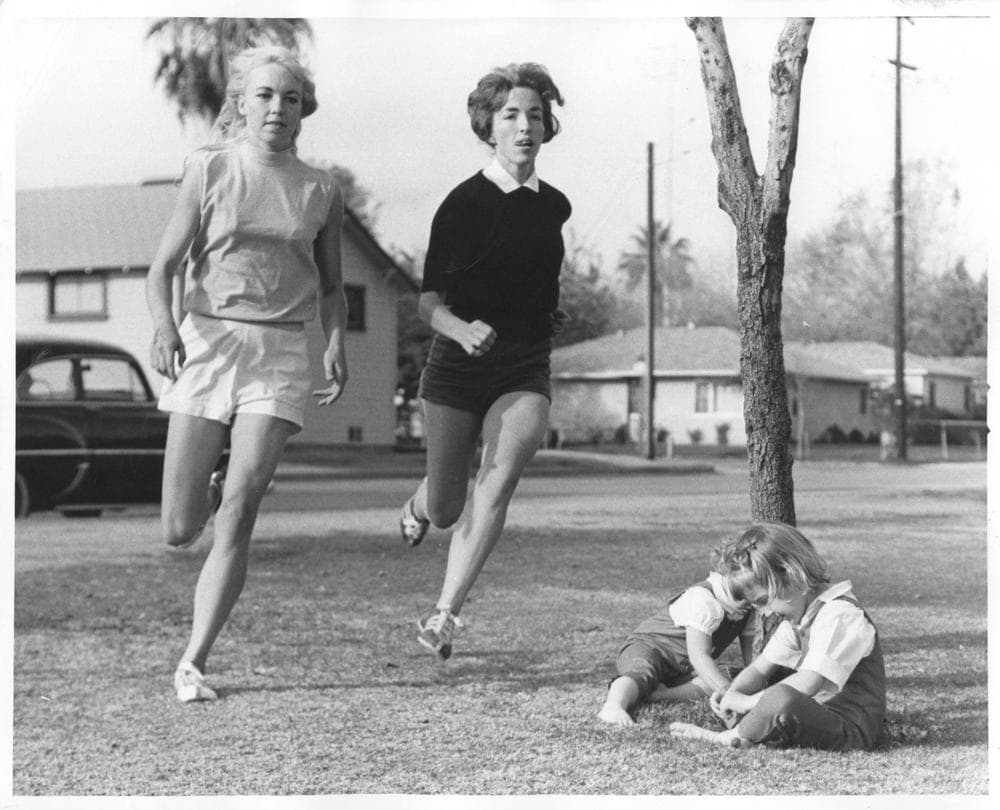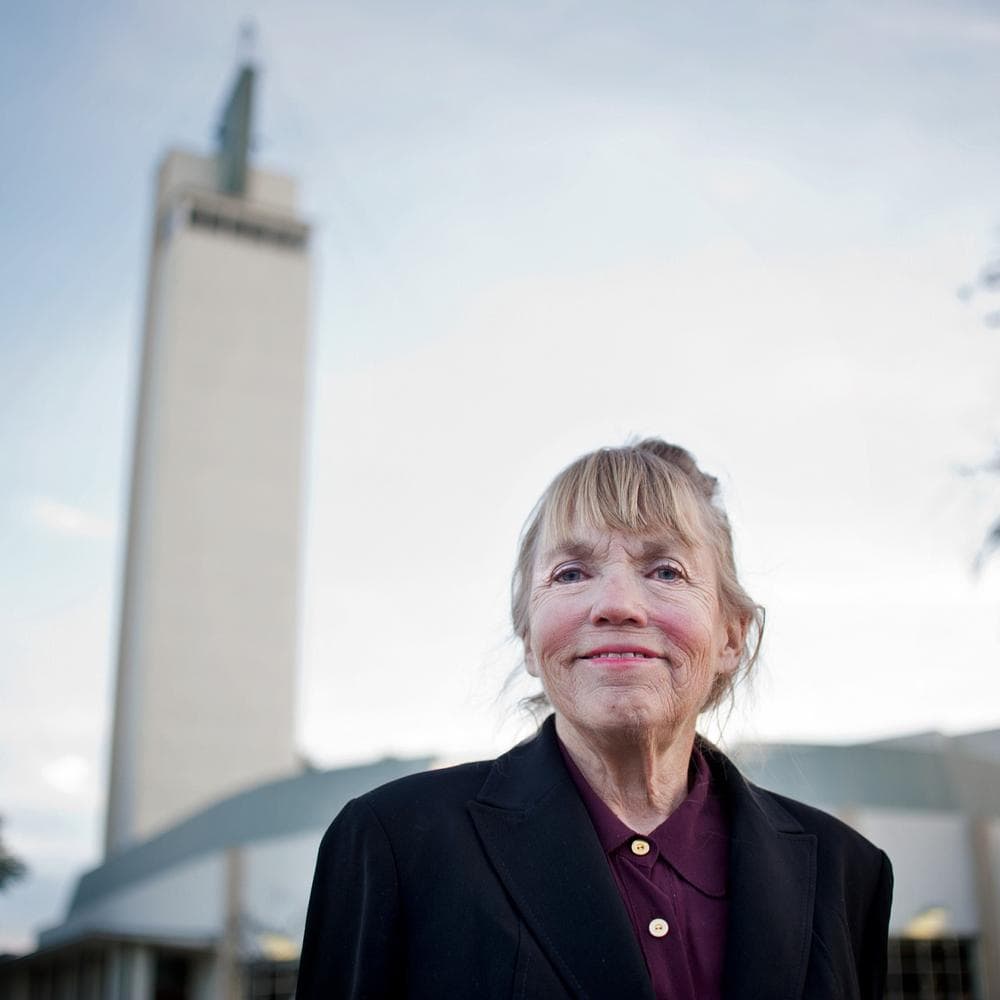Advertisement
Feature
Fifty Years Later, A Celebration For Merry Lepper's Historic Marathon

Last year, according to Running USA, 42 percent of all the runners who completed marathons were female. Through the 1960s, women weren’t even allowed to compete in marathons – let alone finish. But 50 years ago a 20-year-old woman made marathon history, not in Boston or New York, but in Culver City, Calif.
Women runners weren’t allowed to compete in anything longer than 880-meters. Male race officials said running long distances would hurt women’s ovaries. Sound familiar?
“I really had to laugh about that because I was hearing the reason that men gave that women couldn’t drive automobiles in Saudi Arabia was that it would hurt their ovaries,” Merry Lepper said. “Whose ovaries are these?”
Lepper is an unheralded pioneer in women’s athletics. In 1963, Merry was a 20-year-old community college student who loved running long distances.
“I’m not a very fast runner,” she said. “So for me the distance races were a place that I could run slow.”
I'm not a very fast runner. So for me the distance races were a place I could run slow.
Merry Lepper
“I ran for many, many years with my husband, and I would run 20-mile runs, and it just seemed like the natural thing to do,” she said.
Sports historian David Davis says the race they planned to have Lyn crash was Culver City’s annual marathon.
“It was called the Western Hemisphere Marathon,” Davis says. “Actually started in the late ‘40s, and it was probably ranked second or third behind Boston as the preeminent marathon in the United States and certainly the biggest one on the West Coast.”
“Well, Lyn had been talking about running in it, and when we went to races we always went together,” Lepper said. “We were ready for it. We’d been running with the guys. We’d been out running 25 miles every Sunday for a couple of months. We were ready, and she was intending to do that, so I went along.”
On Dec. 16, 1963, Merry and Lyn showed up at the starting line in Culver City, Calif. Lyn says they didn’t get a warm reception.
Advertisement
“Before the race, there was one official who spent about 20 minutes chewing me out, saying I’d never have babies again,” Carman said. “He said the men would be disqualified if we ran, and he gave me a bit of hell.”
The men started, then Lyn and Merry. Merry had a hard time finding her stride, so Lyn went ahead. Merry almost got hit by a car at one point, and she rested on the curb for a bit, but eventually she got back into it.
“I was just running along, feeling comfortable, and I didn’t catch Lyn until about mile 20, and I was thinking, ‘Oh, nice, here she is. Now we can run together,’” Lepper recalls. “And as soon as I got up there, she said, ‘Oh, I just feel terrible. I just can’t do this. I’m just not feeling good today.’ And she said, ‘I’m quitting.’ I said, ‘You can’t quit!’ And so I went on by myself.”
And she finished, with a time of 3:37:07, which immediately became the world record for women.
“It was obvious to us all along: women could run marathons; women could run distance races,” Lepper says. “So it wasn’t really a surprise to me. It was just like, ‘Now the world can see that women can do this without dying or fainting or something.’”

But, Davis, who has written about Lepper's accomplishment, says the world didn’t see the importance of Merry’s achievement. Maybe it was still too focused on her ovaries.
“There were not shoes specifically designed for women’s feet,” Davis says. “There were no things like sports bras. There was no thought to women doing this type of endeavor. And so Merry comes along and really gets absolutely no recognition.”
The Boston Marathon finally allowed women in 1972, and the Olympics saw the light in 1984 in Los Angeles when Joan Benoit won the first women's Olympic marathon.
But Merry Lepper stayed her laid-back self, getting her master's in zoology and a Ph.D. in plant ecology, and becoming a large-animal veterinarian.
“I just kinda forgot about it,” Lepper says. “I was really pleased to see that women were competing in marathons and they were doing so well.”
Then, this spring, David Davis got in touch with Culver City’s politicians, and pointed out their city’s place in history, that an important anniversary was rapidly approaching. And on Monday, Culver City Mayor Jeffrey Cooper finally gave Merry Lepper the attention she didn’t get for 50 years.
“Now therefore, the City Council of the City of Culver City, Calif. hereby congratulates and commends Merry Lepper, a shining example of how one person can overcome tremendous hurdles to fulfill a dream and, in the process, pave the way for generations to come,” he said.
By the way, Merry, who turns 71 on Dec. 31, has a bad knee and can’t run anymore. But she happily drove the 600 miles from her home in Southeastern Arizona to Culver City to pick up the commendation. After all, she likes long distances.
John Rabe has also reported on this story for KPCC in Pasadena, Calif. where he hosts "Off-Ramp."
This segment aired on December 14, 2013.